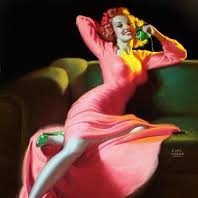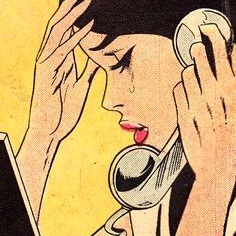Wine + Food Q&A: Graft Wine Shop
Suzanne Pollak
Femi Oyediran, with partner Miles White, of Graft Wine Shop. [Photo: Imbibe Magazine]
Academy Q: How does one start a collection?
Femi Oyediran’s A: There are two or more approaches to the idea of starting a collection. The conversations starts by looking at the intent. Is the intent to have a wide selection of wines you are going to drink occasionally, or is the intent to save a collection of wines available at your disposal? [Are you] looking for wines to build an inventory over time and say, “I’ve collected all these vintages of this wine and this wine.” The pedigree to which you are looking to build your collection is another question.
I think the easiest way from a novice perspective is to have a conversation with a person you will be buying wines from. If you don’t have a lot of experience buying fine wine, the best place to start is with a retailer you can trust, who can give you valuable information. A lot of collections [happen] on a social scale so people have friends doing the same thing [and] they have conversations on what they are buying. Some of them will find outlets [for buying] wines. Sometimes they will collectively purchase together. “Oh there is a case available. You, you, you, and I can split that that case.” That’s the best way to do it.
There are people who do that for a living; they literally curate wines for collectors. Find those people to do it for you. First step: find a retailer you can trust, [who] can give you great advice. Then second step is the social part -- finding people who can share information, a shared hobby of sorts. It becomes communal. After that it’s getting more information: studying, reading, magazine articles. Books need to have context on what you are doing. Decanter magazine would be great. Find a critic whose opinion falls in line with yours. Antonio Galloni is a great critic and is respected by sommeliers. Another thing you can do to add to that social perspective is download apps. Galloni owns an app called Delectable, embraced by sommeliers. Most consumers use Vivino. See what other people are recommending, what other people are drinking. [This] helps you gain some idea of what you are doing. Start a collection [with a] great point of contact and people who can help you.
If you are trying to build a serious collection and don’t have experience, [it’s] easier to find people you have a sense of camaraderie with. Buying retail if you have a team of people doing it with you it becomes more interesting, and you have more buying power. Grow over time.
What about storing?
If you want to get really gutter with it -- not gutter, low brow -- just find a cool, dark space where your wines can sit on their side. I know people who have developed systems where their wines, nice wines, are in cabinets, under their beds, under their couches. The temperature is cooler and its darker, depending on what temperature you keep your house at. It’s kind of like the best place to put it.
What is the ideal temperature for keeping wines?
Ideal temperature for maintaining all wines, I would say, is around 55. Best case scenario. If you don’t have the means to store wines then these are the best places in your house to put them. If you want to invest in a wine fridge, you can do that, or if you want to go crazy you can build out a wine cellar in the house. That’s another whole look...
Some people have a wine collection of 20 bottles. They might have five super nice bottles and the rest they drink over the course of the year or two years. It depends on what you want. If you want a big collection then so be it. If you want no more than 50 wines at a time then so be it. I am sure there are apps to help people organize or you can just kind of build an Excel sheet [to] manage your wines [and] tasting notes, etc. If it’s 50 wines, it’s not really a lot. We have probably around 300 here, including wines by the glass. It’s still growing too.
How do you know what to drink now, and what to keep?
We do research but I also have the experience to know when something is [ready to drink] and when something isn’t. You don’t start a music collection just by listening to music; you go to a record store where somebody knows what they are doing, you ask them questions, and you learn. It’s the same thing in wine.
Does it make you sad when you drink a treasured bottle of wine?
No, not at all. I do it all the time. Crack it open! If you want to, let’s have a party. You know, if someone wants to open up a bottle of wine, that is their choice. It’s not my bottle. Who am I to say “Hey, no, don’t do that!” There are certain times when you are around people, buzzed and having a good time, [who say] “I’m going to open this!” [I tell them,] “No no no, seriously stop, you are going to regret this in the morning.” That happens.
Some people like to document their experiences. Some people like to save the labels of the wines they drink, which I respect. They have binders of all the wine they’ve had, maybe photos of the times they drank it. That’s pretty intimate. I just remember -- a wine memory bank, but it’s not perfect.
What is one of the best memories?
They are all different. Experience overall: I had a really great time at Miles’ mother’s house five years ago, where we got a bunch of wine and bunch of friends over and we had a ridiculously good time. It had nothing to do with the wines; it had to do with the company. The wine was good but the company was better. The combination [made] it a legendary night.
There are times when I had legendary wines. I went out to Napa last year and I was in the [company] of sommeliers [at a] round table which is a really coveted experience to be invited to. We opened insane wines, vintages going from the 20s. That was the most surreal wine experience I’ve been part of. I’ve never had wines of that pedigree and that age before. That was really exciting.
Was that a vertical tasting?
No, that was like this wine, this wine, this wine...
Worst experience?
Buying fraudulent wines. Watch that documentary Sour Grapes on Netflix, about the guy who defrauded the Koch brothers and all these millionaires. He went to prison.
Or buying bad wine, when you buy wine from the gray market, meaning you buy from people who have connections. [Maybe] this guy in NY has all these wines in his warehouse. [You] go and pick them up, you don’t know where he got them from, or the person he got them from. The chain of how the wines arrived is always really important, because you don’t know if something was stored in someone’s 70-degree house for years [with] the bottle sitting up; then they sold it when they moved out of their house and it shipped up to Toronto in a car; then the guy in NY bought it from that person. You buy that bottle for five grand, then you open it and you know it’s vinegar. It’s risky. You have to learn how to be smart about spending your money.
A lot of people who buy who are very serious collectors. A lot of them have figured out a way to verify and learn what they are looking for. Sometimes it’s just a crap shoot. I really have no idea. I just have to figure it out. I’ll take a case of this wine and open it up and see what happens.
Corked -- things happen. I’ve seen it in restaurants. Sometimes it’s not anyone’s fault [and] could have been the bottle itself. There are so many variables. That’s why it’s such a gamble. That’s the thrill for a lot of people. They are willing to roll the dice and see what happens. It’s like parachuting.
How long should a red wine be open before drinking?
There are no hard and fast rules. I like to decant most of my reds as a rule because it looks good; and because a lot of wines, especially if they are youthful, need air. It really depends on the wine.
How do you learn -- eyes, nose, or palate?
I think when I began, a lot of it was my eyes. I did a lot of reading, a lot of listening. When I gained more experience, I started to learn more from my nose and my palate. Those are the most important things now because the information, the knowledge is a part of me now. It’s like knowing how to read music and then playing it, the difference between the two. You could read Charlie Parker but can you play him? You can understand burgundy but can you differentiate between what is good, what’s classic, and what’s not good?
I’m not talking about blind tasting, just tasting wine and, “Wow!” I’ve had these wines before and it’s delicious having that contextual knowledge. It’s something you learn from tasting and listening to people and understanding, versus when you read it in a book and [it] still doesn’t mean you understand the wine.
How long have you been doing this?
I decided wine was the career in 2012. I had been studying wine prior to that for a year or two but I decided in 2012 that I was going to make it my primary interest.
Oldest wine you’ve ever tasted?
1921 Chateau d’Yqueum. I’ve had port from 1908, madeira from 1908, but those are readily available. I am sure there is 1908 Madeira by the glass at Charleston Grill.
What’s your take on speciality glasses?
If you are drinking nice wine, you should drink out of a nice vessel. You can have a universal glass. The glasses we use are a universal. You can use it for everything. Red, white, Champagne. We use Gabriel Glas which is really great. If you want to spend a lot of money, those are the best for your dollar, their standard glass. But if you want to spend a lot of money on superior glasses, you can get Sophienwald, Zalto, Mark Thomas. If you want to spend money, [those are] the top three. Gabriel has a Golden edition that is pretty nice too. These glasses are going to cost $70 per glass.
Would you get a red glass, a white, and a Champagne?
I have Zalto at home. I have a Sophienwald Champagne set. I have Mark Thomas decanters here. Beautiful! We use the Gabriel. I have all of them. I would probably get a white and a red. Honestly, I’d go for a universal for all of them. If I didn’t know, they all make a universal glass.
Do people come to Graft mostly to shop, to socialize, or to just to drink wine?
It’s become one and the same. [When] buying wine, going to a retail store is like one of the most mundane experiences for a lot of people, so we created a social room. It doesn’t make fine wines Disney World, but when you walk in here and you see people, it changes the energy. You are not bored anymore. People are hanging. It feels conducive to whatever you want to do. You can walk in here and get a bottle and leave, or you might run into me here and [say], “Hey, I was just going to come in for a bottle, but let me have a glass of wine and let’s catch up.” Who knows? You might grab more because you are sitting down for a while.
There is something to be said about doing retail, wine especially, in a social room. Completely different! I would never want to do retail any other way. This is conducive to Miles’ and my spirit. If we were just behind a counter all the time, we would not get a lot of fulfillment in life. We would probably hate ourselves. It’s a very different experience. Unless you are the type of store that opens up wines and you hand a glass to your customer when they walk in -- which is cool. But if your relationship is, “Hey, trust me on this bottle to take home,” then the next time you see that person is when they give you feedback.
For us, we get to see immediate feedback from people. A lot of people who come in for retail [build] relationships and I met them because they sat at the bar and they talked to me about wines. They are like, “You know what? I am going to come in tomorrow and buy some bottles.” It’s one hell of a way to gain a customer. They have to like you. If you are a very anti-social but brilliant wine person, a traditional wine store is for you. Since we are very social people, this gave us ability to do more.
Is there any kind of food that is terrible with wine?
There is a wine for everything.
What’s the wine for romance?
Depends on the person. I would never make any assumptions about what a woman wants to drink in general. So I mean as a sommelier, I ask questions and then I find what I think would be appropriate for that person.
What questions do you ask customers?
What do you like to drink? What was the last great bottle of wine you had? For me, if I hear a couple of things I am like, “Okay.” That’s my job. I make a bet. I bet this person would love this wine. That’s the game, right? A good sommelier knows how to ask people questions and find out what they want. It’s like music, the same thing. If you like Fela Kuti, you will probably love Ebo Taylor. It’s an easy bet.
Thanks Femi O. & Graft Wine Shop!
![Femi Oyediran, with partner Miles White, of Graft Wine Shop. [Photo: Imbibe Magazine]](https://images.squarespace-cdn.com/content/v1/527a76b5e4b07965b54b1e2b/1551796070092-8IHBUYJZDURO4WW529DR/graft-wine-femi-oyediran-miles-white-crdt-olivia-rae-james.jpg)















